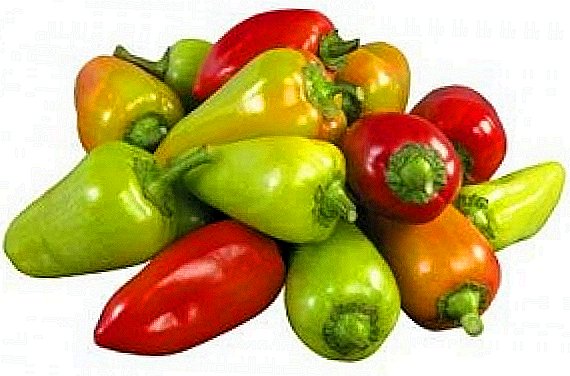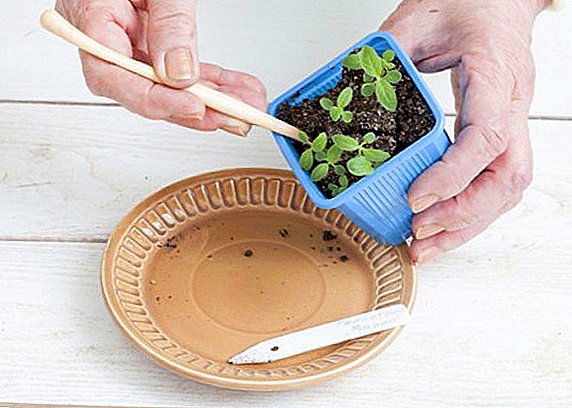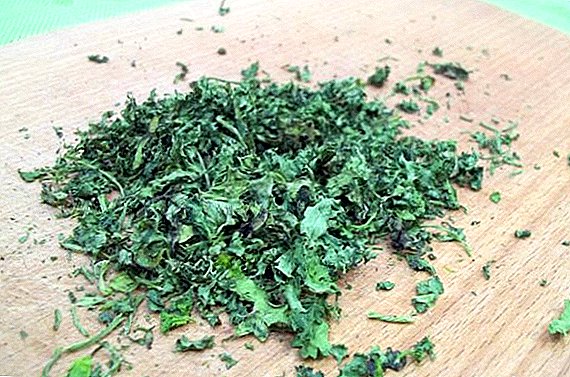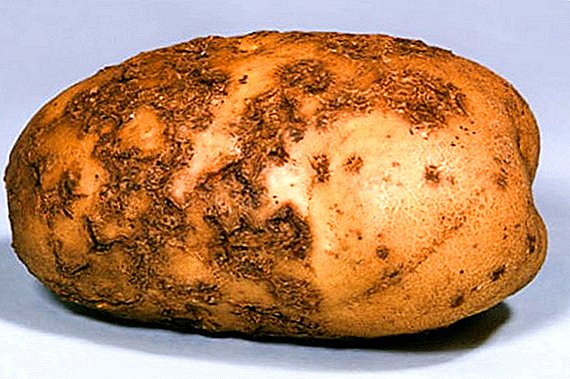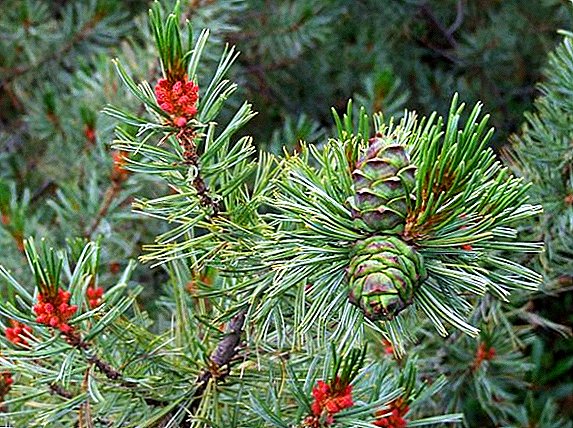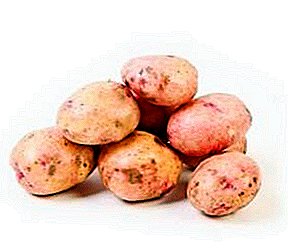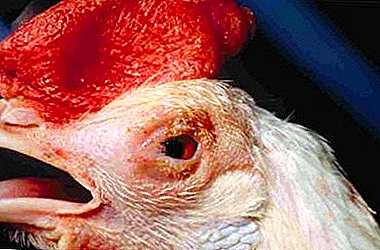
Why is it important for a farmer to know what the plague is like in birds? Because domestic chickens are prone to this infectious disease.
The infection very quickly spreads from a sick bird to a healthy one, and this can happen through the objects of care, feeding troughs, shelves, as well as from one individual to another. As a result - the death of the whole herd.
In this article we will talk in detail about what is plague in chickens, who is the causative agent and carrier of the disease, is it possible to prevent its occurrence, how to treat and what preventive measures to take.
What is the plague of chickens?
 The plague of birds is an acute septic infectious disease of chickens, accompanied by edema of the subcutaneous tissue of the head, neck and chest.
The plague of birds is an acute septic infectious disease of chickens, accompanied by edema of the subcutaneous tissue of the head, neck and chest.
Plague in birds is of two kinds: classical and atypical..
Classical plague, the causative agent of the bark is the ultravirus, transmitted through feces (feces, urine), nasal fluids, blood, organs and eggs and feathers of sick birds.
Atypical
Clinically and pathologically, the disease is in many ways similar to the classic bird plague.
The incubation period is from 4 to 25 days. The disease does not go so clearly for 4 to 8 days. In different countries declared under different terms. In the CIS, it was brought by the German military during World War II and was first discovered on the territory of the German occupation.
Symptoms and course of atypical forms
When an infection occurs on the farm, chickens and young individuals first become ill. There is difficulty in breathing, increased ingestion of air, sometimes "cawing", convulsions, paralysis of the limbs. Edema is absent. Pathological changes are the same as in the case of the classical plague, only edema is absent.
Measures for the fight, prevention of atypical plague are the same as in the classical plague (more on this later in the article). In addition, all birds susceptible to the plague in a threatened area with a formol-hydroxide vaccine are immediately vaccinated. All actions are carried out strictly in accordance with the charter of the Veterinary Department of the Ministry of Agriculture of the Russian Federation.
Pathogens and carriers of the disease
The causative agent is an ultravirus, which is cultivated on the inside of the chicken embryo. Mammals do not become infected with a virus, but can be used as carriers of it.
The main carrier are sick birds. Transferring infection from infected poultry houses and from disadvantaged farms to healthy ones through transport, tare, etc. Basically, chickens, turkeys, less often - guinea fowl, peacocks, very rarely - pheasants.
Ducks, geese and pigeons are infected with a minimal probability, but aquatic species, when exposed to sick birds, can also become carriers of the virus. The direct transmission of the virus occurs through the affected skin and mucous membranes.
Signs and symptoms
 Symptoms of the disease occur after an incubation period when the pathogen has spread through the body of the bird.
Symptoms of the disease occur after an incubation period when the pathogen has spread through the body of the bird.
The main signs of plague:
- depressed state;
- loss of appetite;
- weakness;
- drowsiness;
- sudden breakdown.
The sick bird moves a little, sits in one place, with its head and wings down, feathers are disheveled, the eyelids are swollen, there is an increased tearing.
The temperature rises to 43-44 °. Blue scallop and earrings are coming; swelling of the skin and epithelial tissue in the head, eyes, neck and breast. There is an outflow of mucus from the nostrils and beak, loose stools and diarrhea. Bird wheezing, breathing quickened and difficult, and the mucous membrane of the oral cavity can be covered with hemorrhagic formations. In some cases there are manege movements, convulsions.
The incubation period is from 1 to 5 days. Duration of illness ranges from several hours to a week.
Pathological changes
In infected birds, swelling and swelling of the epithelial subcutaneous layer are observed. Cyanosis-like lesion of the scallop and earrings, exudation in the chest and abdomen and in the pericardial region, sometimes pulmonary edema and inflammation, in the esophagus, on the mucous membrane of the tracheal tube and in the bronchi of the hemorrhage or hyperthermia; the thyroid gland and the thymus gland become enlarged and inflamed.
In rushing chickens, hyperemia and vascular infiltration of the serous membrane of the yolks, which leads to rupture of the film. Content enters the chicken abdomen and causes peritonitis. The liver is inflamed and enlarged. Spleen enlarged. Kidney swollen and down. On the mucous membrane of the esophagus local hemorrhages.
Diagnostics
The conclusion of the infection with plague and confirmation of the diagnosis can be made only after laboratory analysis.
Based:
- Negative samples bacterioscopic and bacteriological studies.
- No pathogenicity of material for laboratory mammals.
- The spread of infection among chickens (especially young).
- Infection of trophic filters of blood and organs.
In the case of suspected immunological differentiation of the virus specifically infect the bird, which was vaccinated.
If the differential diagnosis, factors of an epizootic kind, clinical and pathological signs of anxiety gave grounds for suspicion of plague, it is necessary to immediately confirm the diagnosis. A negative result of bactericidal research, as well as infection of ducks and rabbits with positive results of infection of chickens will make it possible to detect the disease.
Methods to combat the spread of the disease
 If plague is detected, it is necessary to close the birds in the premises as soon as possible, remove all working equipment to the poultry house, establish quarantine on the infected farm and the area in which it is located.
If plague is detected, it is necessary to close the birds in the premises as soon as possible, remove all working equipment to the poultry house, establish quarantine on the infected farm and the area in which it is located.
Sick birds will have to be killed and burned, the birds of which killed the disease - just burn, birds suspected of being infected can be slaughtered for meat, which can only be used inside the farm and subject to treatment for 20 minutes and at a temperature of 100 °.
Slaughter of birds suspected of infection should be carried out at specialized sites. The slaughterhouse, infected poultry houses, collective farm yards, walking places, all tools and devices are subject to immediate disinfection with a 10% solution of lime chloride, a 3% solution of formaldehyde, a 4% alkaline solution, a 20% solution of hydrated lime.
Before the process of disinfection of walking places, the grass should be mowed and burned, disinfected with a 20% solution of hydrated lime and not used for 3 months. Manure, perches, feeders with the remnants of feed - burn. Feathers that are located at the poultry processing plant and obtained before the appearance of bird plague should be disinfected in 3% formaldehyde solution for 40 minutes.
Eggs that were collected during 2 weeks before the detection of the disease, boil for 10 minutes. at a temperature of 100 °.
For a period of quarantine for 30 days, it is prohibited to remove live chickens, turkeys and guinea fowls from the infected area, inside it is prohibited to sell live and killed birds, sell feathers and eggs.
Modern methods of treatment
Despite the development of scientific and technological progress, an effective method of treatment has not yet been found, everything that can stop the symptoms or stop the process of infection is the extermination of infected individuals.
Prevention
It is much easier to prevent the occurrence of infection, namely:
- carry out selective diagnostics;
- control migration and relocation of birds between households;
- check the composition of the feed and the purity of the preparations;
- monitor infection activity and infection trends in neighboring regions;
- vaccinate to prevent infection.
Economic factor
If the farmer did not pay enough attention to preventive and diagnostic measures, then in addition to losing meat and rushing chickens, he risks allowing the disease to spread to neighboring farms, which may entail fines, sanctions, and lawsuits.
In addition, you will have to pay for the measures of extermination and disinfection of paddocks, tools, poultry houses, chicken coops. In the event that the head of the farm has a conclusion on vaccination in his hands, it will be very difficult to prove his involvement in the infection, even if the vaccine did not work.


